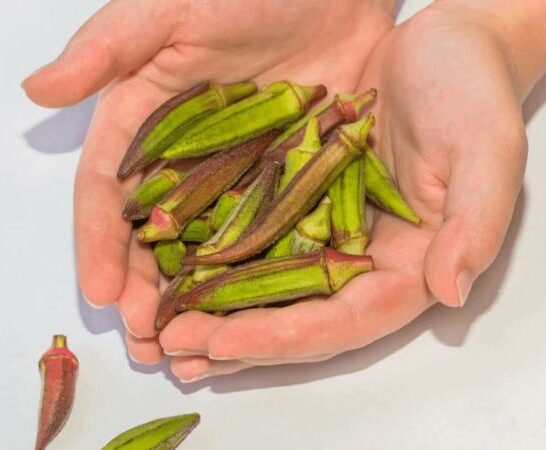What color is Okra?
Okra is a seasonal vegetable that is also known as ladies’ fingers due to their resemblance to real fingers.
Okra is a great source of antioxidants, fiber, minerals, and vitamins. The vegetable has a sticky juicy slime inside that is often used to thicken soups and sauces.
Okra is an important crop due to its nutritional value that is grown in many countries. You can use all of the plant from the seeds, pods, stems, buds, flowers to its fresh leaves.
Okra has a fuzz on the outside much like a peach and a very mild taste that is similar to eggplant.
Okra has seed pods that contain small seeds that can be eaten raw or cooked. In addition, the okra seeds can be saved. Now, what about the color?
What Color Is Okra?
The most common form of okra is the green okra that is either smooth or fuzzy can be pointed, rounded, long, or short. There is also purple-colored okra and red okra.
Purple Okra
Not too commonly found is the purple okra that has a purple and green bean.They lose their purple tones to a dark green when they have been fully cooked.
When purple okra is used in pickled okra, it can have beautiful pink hues to it.
Red Okra
Red okra or burgundy okra, dwarf red, and red velvet are all varieties of red okra. The red version is completely edible with no taste difference to the green variety
The only difference is the color. When the red okra is cooked, it will lose its red tones, and the pods will turn green.
What Color Are The Okra Flowers And Seed Pods?
When the okra plant is around 3 months old, you will start to notice beautiful yellow flowers.
The flowers will turn into seed pods which will be brown in color with little white seeds located inside.
The okra seed pods start out as beautiful light green, but once cooked, they will turn to dark green.
Once the okra starts to dry out, you will notice the seed pods will harden. The pods will break, then decay and fall to the ground.
If you find okra that is brown or has black spots, this indicates that the okra is going bad and won’t be nice to eat at all.
If the whole thing has gone black, this can indicate bacterial growth, which will make you very ill if you consume it.
Conclusion
Now that you know exactly what okra looks like, you can head to your local grocery and find the variety you like, and start to reap the health benefits.
Look for bright green okra that is fresh and doesn’t feel squishy or extra hard.
Okra might become your next favorite side dish.

